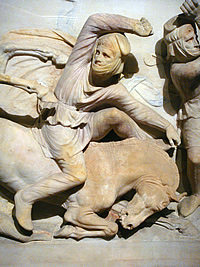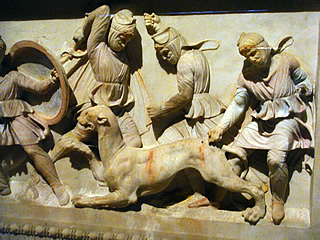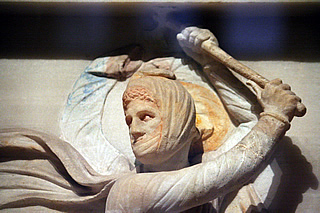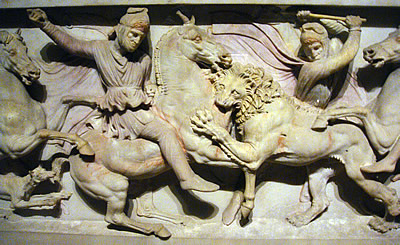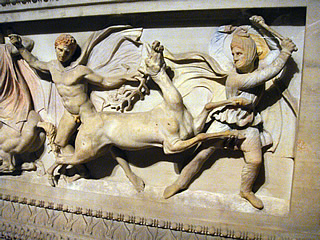

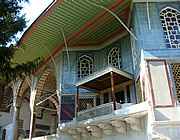
The fabulous Topkapi Palace is a must-see of Istanbul. The harem is a fascinating glimpse into an enclosed female world within this opulent palace of the sultans.
Once part of the grounds of the Topkapi, the Archaeology Museums are well worth a visit - the Alexander Sarcophagus alone is worth the effort!
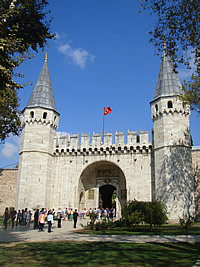
In 1453 Istanbul was a city in decline. It fell to Fatih Sultan Mehmet II who embarked on a programme of repopulation, bringing in many Anatolian people, Greeks and other nationalities. His capital was to be a thriving place and thus began a period of prosperity and riches for the city and the sultans themselves. The Sultans created a world within a world, nowhere better exemplified than in the Topkapi Palace.
When Fatih Sultan Mehmet captured the city in the fifteenth century the Great Palace of the Byzantines was in ruins and so he built his first palace here where Topkapi now stands. The Topkapi Palace was the main residence of the Ottoman Sultans for over 300 years. The complex occupies a huge area on the eastern edge of the peninsula. It has been severly damaged by fire several times, notably in 1665.
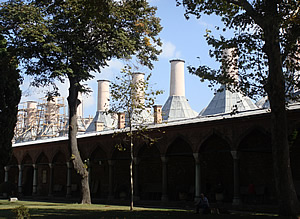
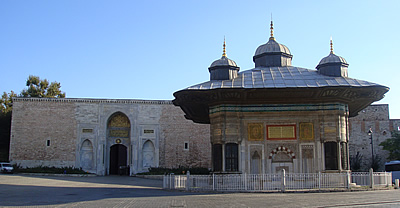
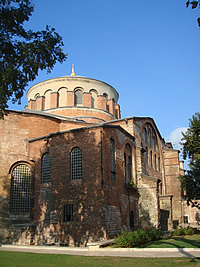
The Topkapi is made up of four courtyards, each more exclusive than the previous, the final courtyard being for the sole use of the Sultan.
The First Courtyard is reached through the ornate Imperial Gate, built in 1478 and now covered with 19th century marble. Just outside is the Fountain of Ahmed III, built in 1728. This sultan so loved tulips that his reign is dubbed the 'Tulip Era'.
The First Courtyard was the only part of the palace open to the public and parades and ceremonies would be held here. It is also where the janissaries, the palace troops and the Sultan's personal bodyguard, cooked there meals, beneath a large plane tree. We tried hard to identify the tree, being big fans of Jason Goodwin's "Yashim" detective stories!
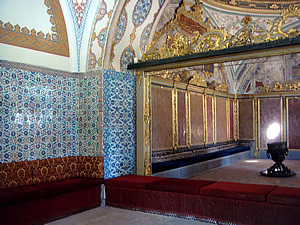
Within the First Court is Ayia Eirene, a very old church, originally from perhaps as early as the fourth century, though it has been damaged by fires and undergone repairs and restoation several times over its life.
At the northern end of the First Courtyard the Gate of Salutation leads to the Second Courtyard and the Inner Palace. Within the Second Courtyard are the huge kitchen block and the Domed Chamber where the Imperial Council met. The kitchen block was undergoing renovation at this time so we couldn't get inside - in the past it has housed exhibitions. We had to content ourselves with marvelling at the huge chimneys! It is a massive building, having to feed thousands.
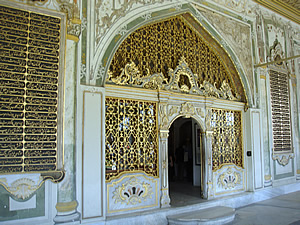
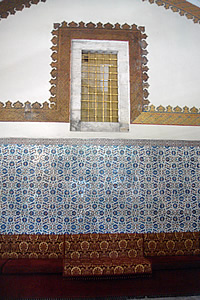
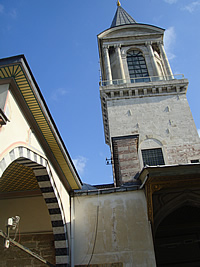
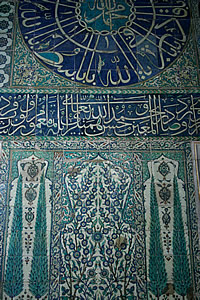
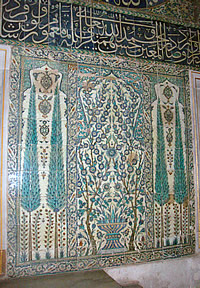
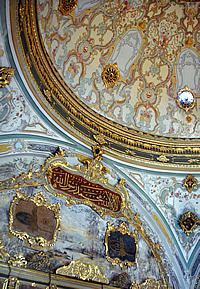
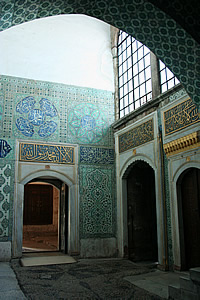
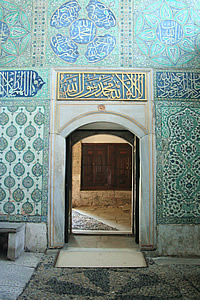
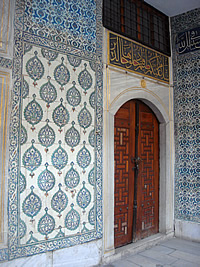
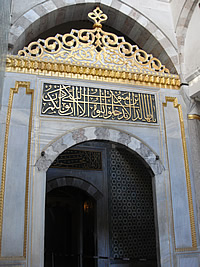
The Domed Chamber was used for the meetings and business of the Divan - the name for a council which later came to be used for the long cushioned benches which typically lined the interior walls where the meetings took place. The current three-chambered building dates from the time of Suleiman the Lawgiver, Suleiman the Magnificent, sultan for 46 years until his death in 1566. Suleiman broke the tradition that sultans should attend council meetings, but he could still observe, without being seen, from a grilled window in the wall above the seat where the Grand Vezier sat. The window was in a chamber of the Tower of Justice and could only be reached from the harem. Of course, the council members couldn't tell whether the sultan was there or not!
From the Second Courtyard there is also an alleyway to the stables. The stable block is now in use as an exhibition space and it had some interesting exhibits on life in the Harem, the entrance to which is also in the Second Courtyard.
The Harem consists of hundreds of rooms arranged around a series of interconnecting courtyards and access was restricted to certain people such as the Sultan and his family, consorts, favourites and concubines, the Valide Sultan (mother of the sultan) and the eunuchs who acted as guards.
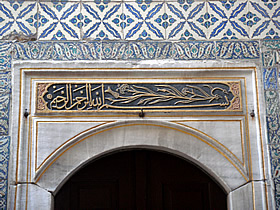
The entrance from the Second Courtyard leads into the Room of the Cupboards where records were kept. This in turn leads into an area for the Eunuchs: first the Room of the Sofa with a Fountain - a guard room, then the Courtyard of the Black Eunuchs. Behind the walls lies a a huge complex of buildings purely for the eunuchs: dormitories, a mosque, baths, etc. plus a Princes' School. The eunuchs were usually taken in war as young boys, castrated, and served the sultan for the rest of their days - such a barbaric practice.
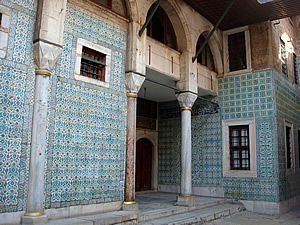
The walls are covered with fine ceramic tiles, the predominant colour being blue.
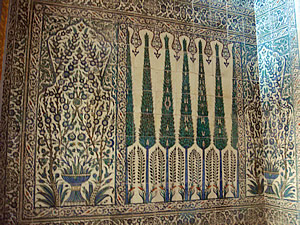
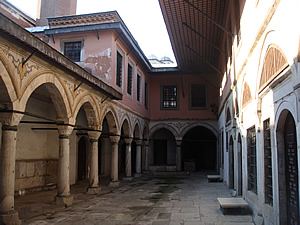
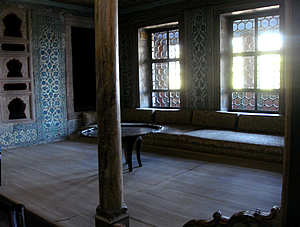
At the end of the Courtyard of the Eunuchs is the entrance to the Harem proper. Immediately through the gate is a small, but beautifully tiled, guard room.
It's really a maze of contrasts inside the Harem, beautiful tiled rooms connect to dark corridors, locked gates and barred windows overlook sunlit courts - it's easy to imagine the secretive lives and intrigues that must have gone on here.
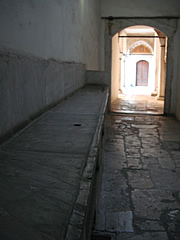
From the guard room we entered a long dark corridor with a stone sink along one wall - this was something to do with delivering food to the ladies of the harem, perhaps where all the dishes were stacked. It led us into the small dim courtyard of the female slaves or concubines - women given as gifts or taken as spoils of war; they were never Muslim as the religion forbids the enslavement of Muslims. The courtyard is surrounded by their quarters - dormitory, laundry, bath and so on. With very little to do but gossip and attend to the wishes of the sultan it must have been boring and depressing for these poor prisoners, far from their own lands.
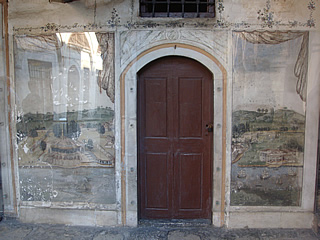
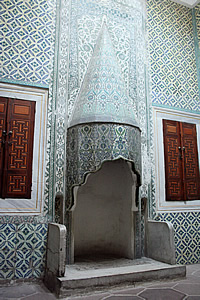
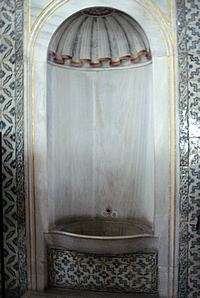
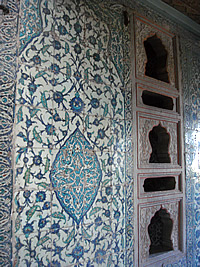
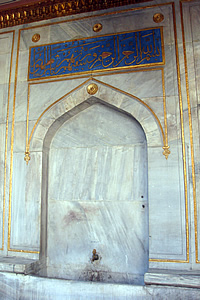
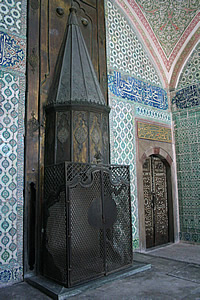
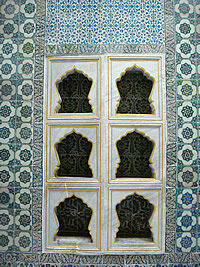
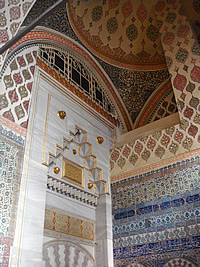
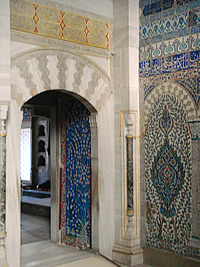
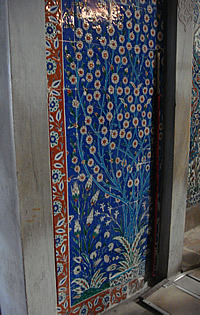
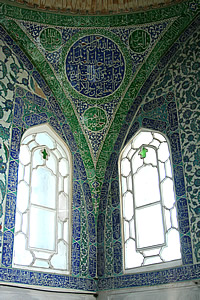
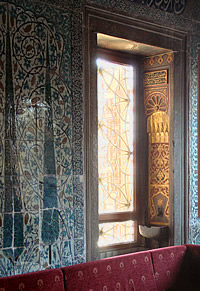
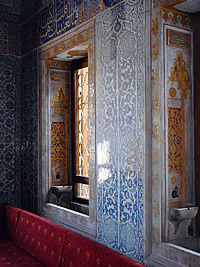
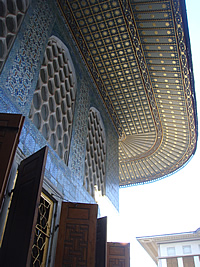
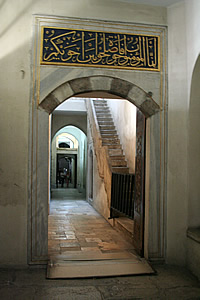
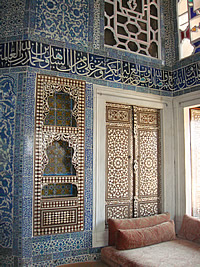
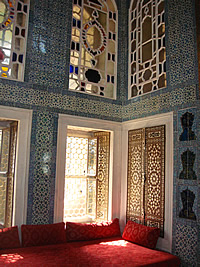
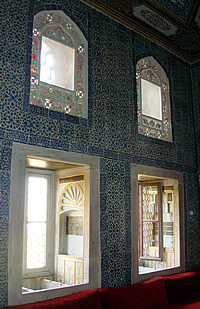
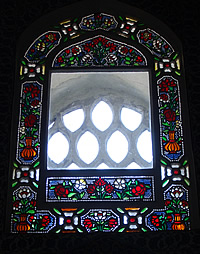
Here we are a step away from the quarters of the Valide Sultan. She would have been the most powerful woman within the royal household and her Court is central to the whole complex of the Harem.
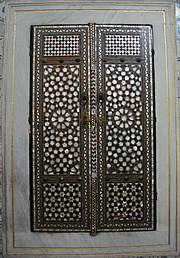
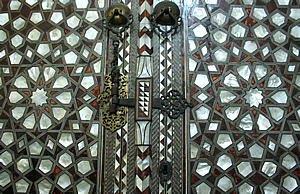
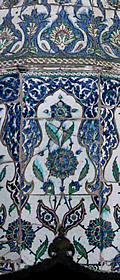
The decoration and workmanship in the Valide's apartments is very fine and includes classical European elements in the paintings on the walls.
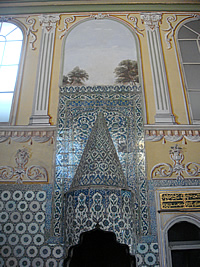
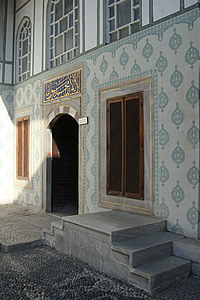
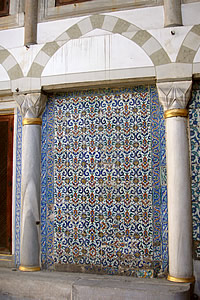
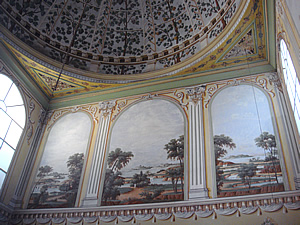
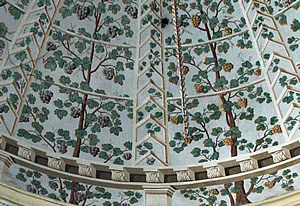
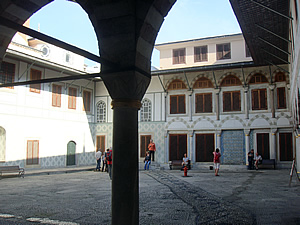
A door in the corner of the Valide Sultan's Courtyard leads to the apartments of Sultan Murad III. Three stained glass windows brighten the Hall with the Hearth which gives onto the beautiful Hall with the Fountain.
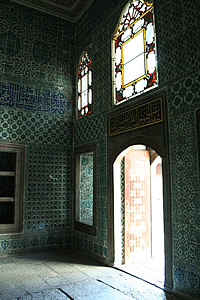
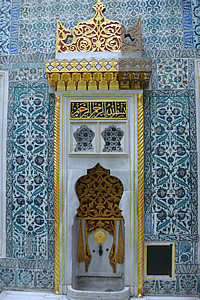
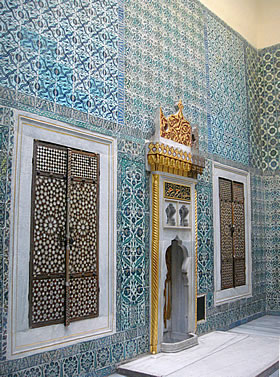
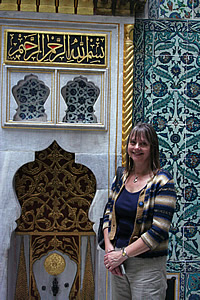
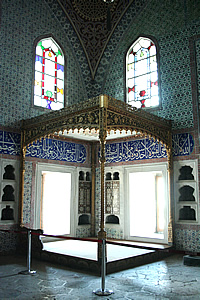
As the rooms get closer to the Sultan the quality of the tiles and workmanship gets even better. The vestibule to the Privy Chamber of Sultan Murad III is another masterpiece. The Privy Chamber was constructed in 1578 on the orders of Sultan Murad III to the designs of the master architect Sinan and has been used throughout history as the official and private apartment of the sultan, it seems to have acted both as audience chamber and bedroom. It is one of the most magnificent architectural spaces of all Ottoman architecture and reflects the peak of Ottoman artistic achievement. It has 16th century Iznik tiles, themselves a peak of Ottoman tile art.
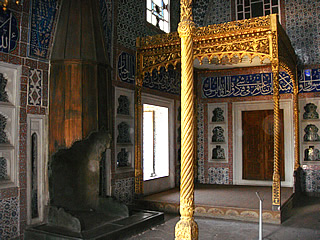
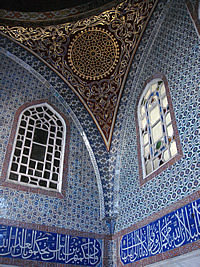
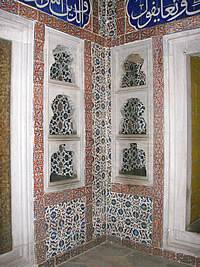
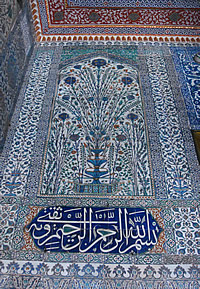
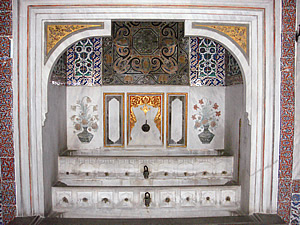
Beyong the Privy Chamber of Murad III are two smaller rooms. First the Privy Chamber of Ahmed I, which has more beautiful Iznik tiling. The second room is quite a surprise, being decorated with painted panels on the walls depicting fruit and flowers. This is the Privy Chamber of Ahmed III and was probably a dining room. Photography was strictly forbidden - it's dark and flash would generally be required which could deteriorate the colours - so this is understandable.
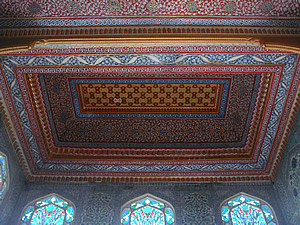
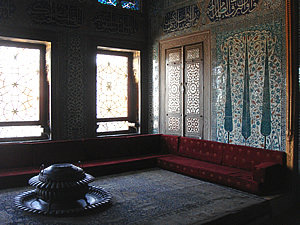
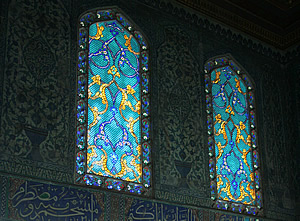
Returning through the privy chambers we came next to two rooms called the Twin Kiosk, the domain of the Crown Prince. These have gorgeous stained glass windows and are furnished with rugs and sofas around the beautifully tiled walls.
Water was obviously very important in the hot climate, valued, of course, for drinking and bathing, but also for its aesthetic appeal in garden pools and the gentle sound of fountains. The Twin Kiosk has small fountains fitted into the window frames with marble troughs below to collect the water.
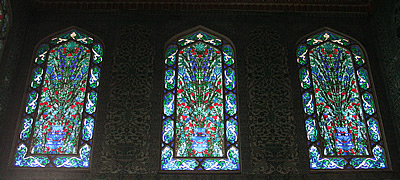
The Twin Kiosk overlooks the Courtyard of the Favourites who were the sultan's favourite consorts.
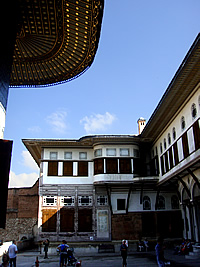
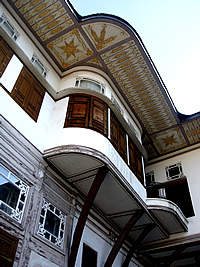
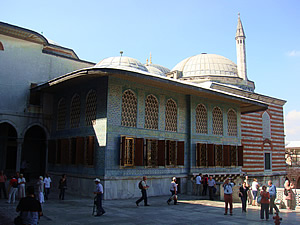
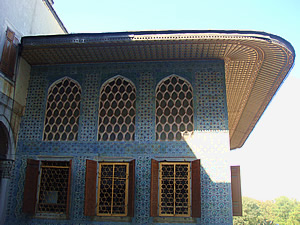
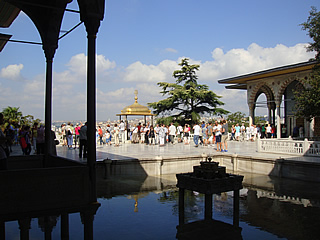
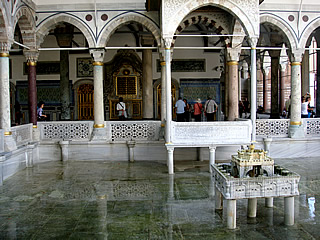
Via the Golden Road, the long passage running practically the whole length of the harem, we returned to the palace. We had spent around one and a half hours in the harem, a very impressive place, some of the decoration stunningly beautiful.
We emerged into the Fourth Courtyard, the innermost sanctum of the palace reserved for the sultan and his family. It has a number of kiosks and a beautiful marble terrace with fountain as well as traditional gardens.
The Iftar Bower on the Terrace has magnificent views of the Golden Horn. Under the gilded baldaquin the emperor would break his fast after sunset during Ramadan.
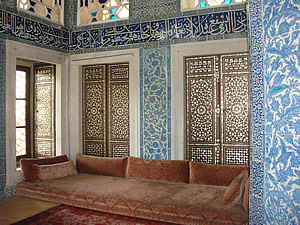
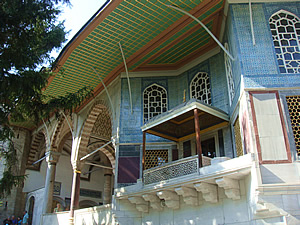
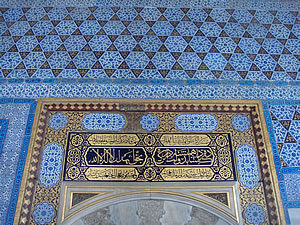
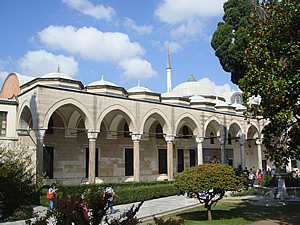
The kiosks are furnished with plush sofas and decorated with tiling, inlaid mother-of-pearl cupboards, gilding and stained glass.
The Baghdad Kiosk on the marble terrace was built by Murad IV after his successful capture of Baghdad in 1639. It has very deep sofas but is light and airy with many windows.
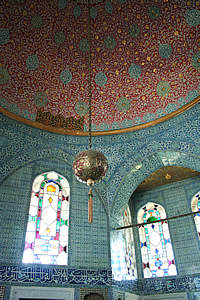
Murad IV also had the Yerevan Kiosk built after another successful campaign. It has a lovely private balcony which must have terrific views over the Golden Horn.
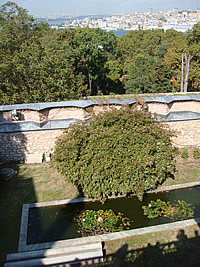
One really unusual room for us to see was the Circumcision Room. Circumcision of royal princes was a very important tradition and it was accompanied by festivities and celebrations, including the circumscision of thousands of lower-born boys. The Muslim Heritage website describes the entertainments performed over the festival days including war games performed by the janissaries, fireworks, dramas and sports.
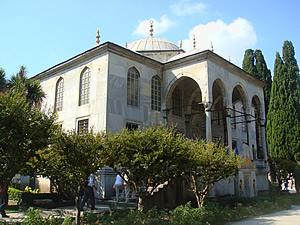
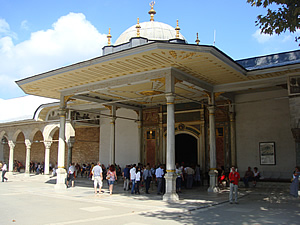
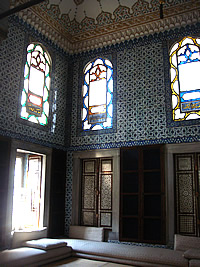
The Fourth Courtyard is connected to the Third Courtyard not by an impressive gate but by two rather dark covered passageways.
In the Third Courtyard we are back among civic and ceremonial buildings such as the throne room (closed for restoration at this time), the very crowded Palace Privy Chamber which is home to many sacred objects, and the eighteenth century Library of Sultan Ahmed III - disappointingly bereft of books, scrolls, or anything which might identify the interior as a library, these were kept in the cupboards lining the walls.
The Imperial Treasury we had looked into on a previous visit - the queues were enormous so we didn't go in again but it has a very impressive collection of gold and jewels including the emerald-studded Topkapi Dagger.
We did go in to see an exhibition of Ottoman royal clothing which is beautiful. Very elaborate coats and some very long and baggy trousers, very interesting talismanic shirts - again, photography is forbidden.
We left through the Gate of Felicity, originally from around the fifteenth century but practically rebuilt in 1775, which connects the Second and Third Courtyard. The gate also formed a framework and backdrop for the sultan when he presided over important ceremonies.

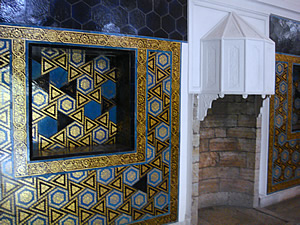
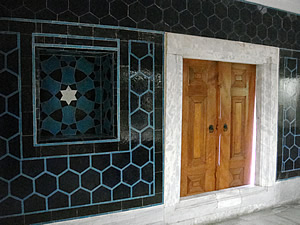
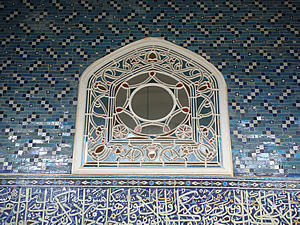
The museums are close to the Topkapi Palace, in fact on lands once encompassed by the palace grounds. One of its buildings, the Tiled Kisk, built in 1471, was once part of the palace and, true to its name, has large panels of tiles on its exteriors walls. It does have displays of pottery inside but is worth going into for the interior of the building itself which also has fabulous tiling. Most of the tiles are hexagonal or triangular in shape with deep blues and yellows rather than the usual pale blues.
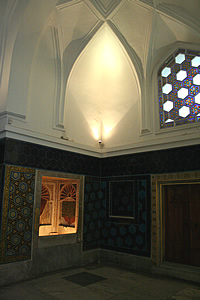
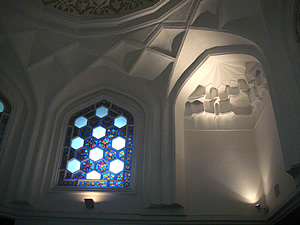
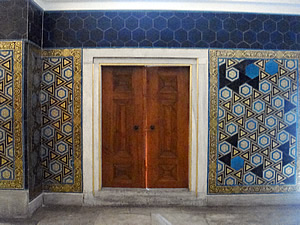
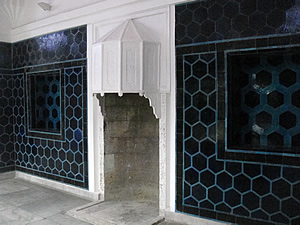
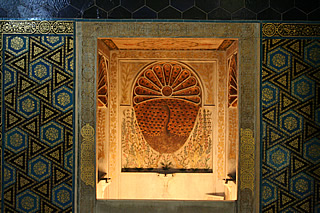
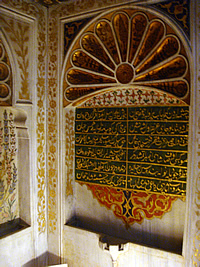
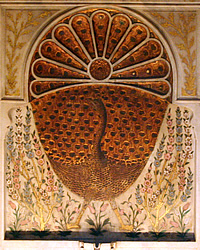

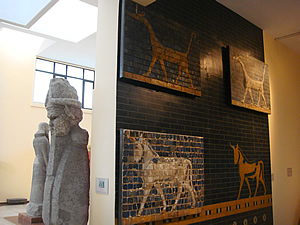
There are some wonderful artefacts in two other buildings: the Archaeological Museum and the Museum of the Ancient Orient. A wonderful surprise were the panels from the Babylonian Ishtar Gate, built by Nebuchadnezzar II (604-562 B.C.), in the Museum of the Ancient Orient.
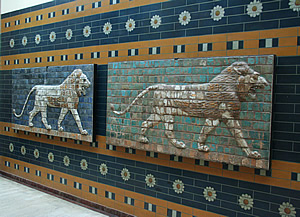
This monumental structure was covered in glazed brick depicting dragons and bulls. The processional street leading to the gate had glazed brick depictions of lions (for all you Narnia fans, Aslan is the Turkish word for lion!). Though Berlin has a reconstruction of the gate, and several museums have one or more of the animals, Istanbul and Berlin are the only ones to have all three.
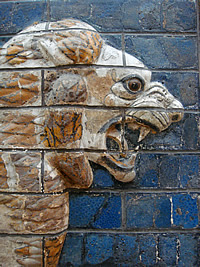
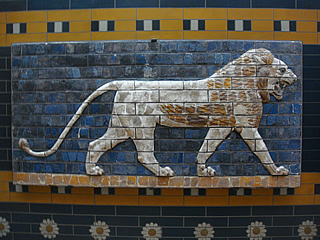
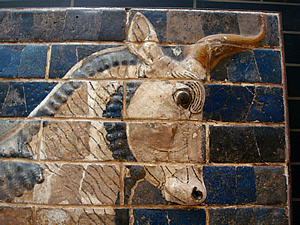
The lion was the sacred animal of the Babylonian goddess Ishtar, the bull that of the god Adad, and the dragon, "Mususu", of the god Marduk. The dragon has the neck and head of a snake, a body looking like snake skin and talons of an eagle on its rear legs.
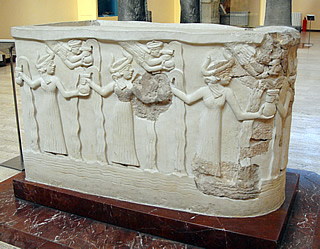
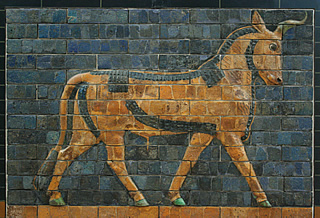
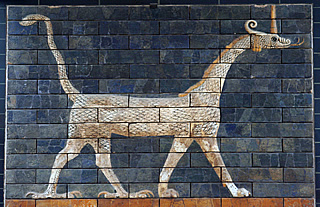
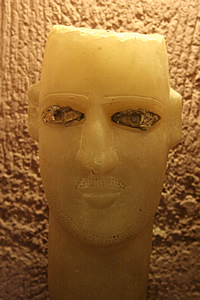
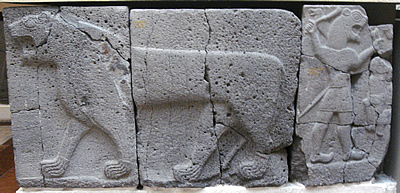
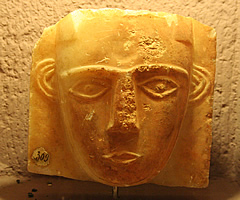
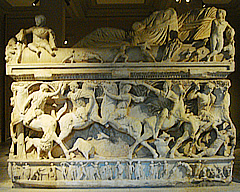
Also in the Museum of the Ancient Orient collection are some beautiful 3rd century B.C. - 1st century A.D. alabaster heads from the Yemen. They are grave goods- representations of the dead - amazing to be looking on these faces 2500 years later!
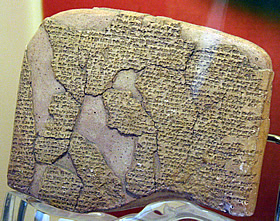
Probably the Museum of the Ancient Orient's most prized possession, however, is the Kadesh peace treaty between the Hittite King Hattusilis III and the Egyption Pharaoh Ramses II, one of three tablets known to remain. It was written in Akkadian, the international script of the day, in 1269 B.C.
The Egyptian's carved their version on the walls of the Temple of Amon at Karnak and the Ramesseum, with suitable editing to emphasise their role!
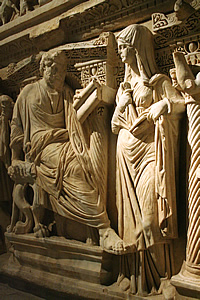
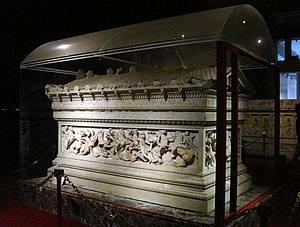
There is no doubting the highlight of the Archaeological Museum: the magnificent marble Alexander Sarcophagus. On one long (over 3m) side it has a battle scene, thought to be the Battle of Issus against the Persian army led by Darius III in 333 B.C., the Macedonians being led by Alexander the Great. As a result of his victory Abdalonymus was made King of Sidon and this is thought to be his sarcophagus. It dates from the late 5th century B.C: and was discovered in the Royal Necropolis of Sidon, Lebanon.
On one end is the Battle of Gazze, 312 B.C. in which Abdalonymus features.
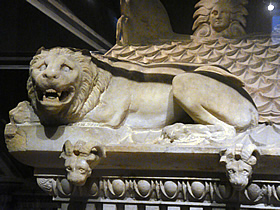
On the other long side and end face are hunting scenes, Alexander taking part in a lion hunt on the long side, Abdalonymus a panther hunt on the end scene.
The carving is very well done with a huge sense of movement and tension in all the scenes. Originally it was vividly coloured and traces can still be seen on some of the figures.
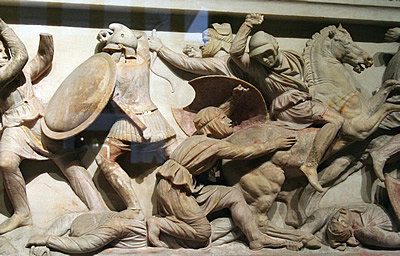
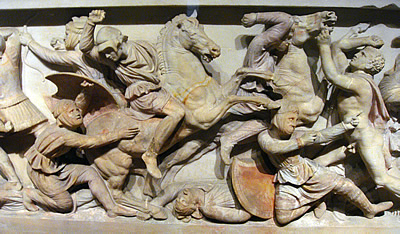
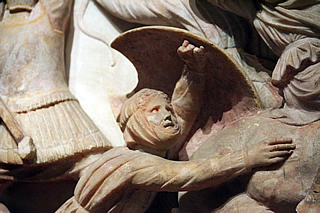
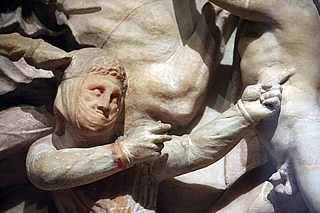
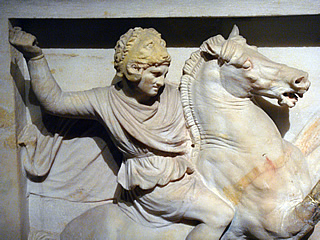
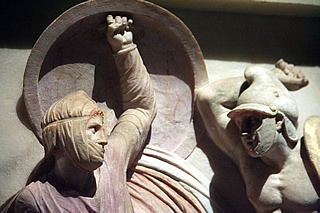
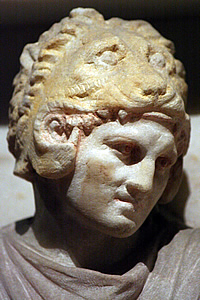
It is called the "Alexander" Sarcophagus because of the depictions of Alexander. He is wearing a lion skin symbolising his claimed descent from Herakles.
